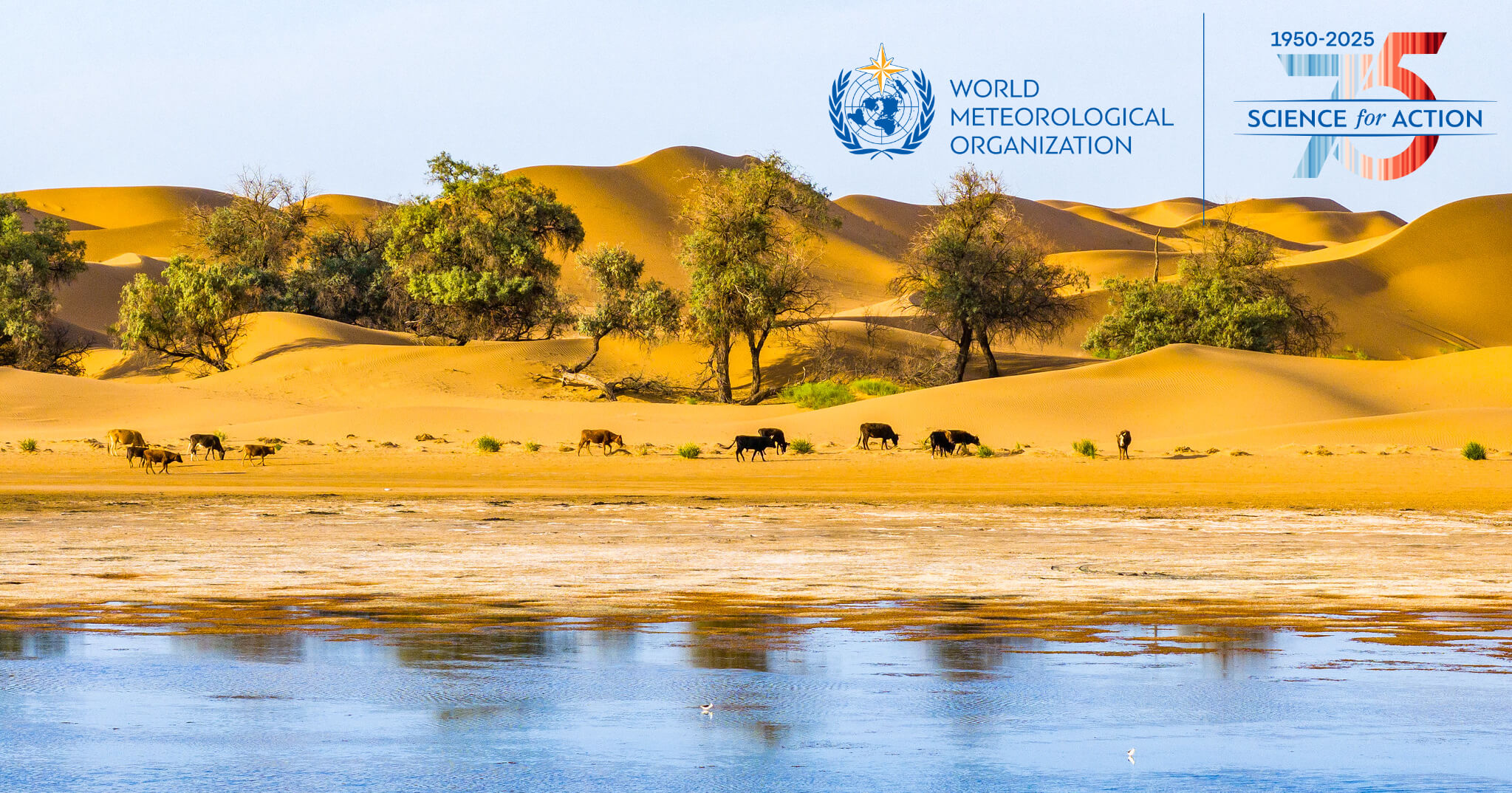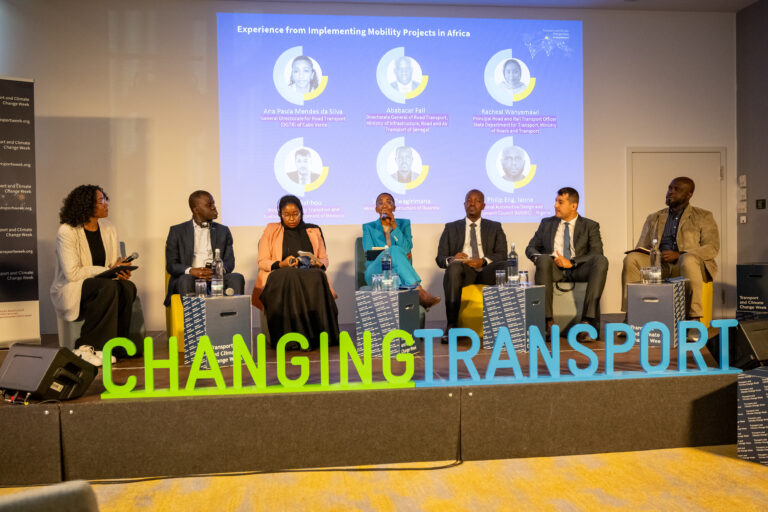Regional UN Webinar on Digitalization of Public Services and Digital Public Infrastructure – Highlights – World Meteorological Organization WMO

Report on UN Digital Transformation Group Webinar: Aligning Digital Public Infrastructure with Sustainable Development Goals
Introduction and Strategic Context
On 14 May, the UN Digital Transformation Group for Europe and Central Asia convened a webinar focused on the Digitalization of Public Services and Digital Public Infrastructure. The session, part of a regional series initiated in December 2024, was strategically timed ahead of World Telecommunication and Information Society Day. The primary objective was to support UN Resident Coordinators and Country Teams in leveraging digital transformation as a critical accelerator for the Sustainable Development Goals (SDGs). The event underscored the theme of utilizing digital innovation for sustainable development, a core tenet of the 2030 Agenda.
Multi-Agency Collaboration for SDG Acceleration
The webinar featured contributions from key UN agencies, highlighting a unified approach to achieving the SDGs through digital means. The session emphasized the development of interoperable digital systems to ensure inclusive and sustainable service delivery, which directly supports several SDGs.
- Participating Agencies: The session included regional representatives from the International Telecommunication Union (ITU), Food and Agriculture Organization (FAO), United Nations Development Programme (UNDP), United Nations Children’s Fund (UNICEF), World Health Organization (WHO), and World Meteorological Organization (WMO).
- Core Focus: The ITU’s GovStack approach was presented as a model for creating interoperable digital public infrastructure, essential for advancing SDG 9 (Industry, Innovation and Infrastructure).
- Partnership for the Goals: The collaborative nature of the event itself served as an example of SDG 17 (Partnerships for the Goals), demonstrating joint UN action to support Member States.
WMO Contributions to Climate Action and Resilience (SDG 13)
The World Meteorological Organization (WMO) detailed its specific contributions to building digital public infrastructure that enhances climate resilience and supports critical environmental SDGs. The presentation by Natalia Berghi, from the WMO Regional Office for Europe, focused on integrating weather, climate, and water services into national digital agendas to build inclusive, climate-resilient societies.
- Strengthening Digital Infrastructure for Climate Adaptation: Initiatives such as WIS 2.0, OSCAR, and HydroSOS were presented as foundational elements of a digital public infrastructure that directly supports early warning systems, climate adaptation, and disaster risk management. These efforts are crucial for achieving SDG 11 (Sustainable Cities and Communities) and SDG 13 (Climate Action).
- Capacity Building for Sustainable Development: Tools like the WMO Global Campus and its e-learning platform were highlighted as key resources for strengthening the institutional and technical capacities of National Meteorological and Hydrological Services. This contributes to SDG 4 (Quality Education) by providing specialized training to manage climate-related risks.
Conclusion and Forward Direction
The webinar marked a significant advancement in coordinating joint UN action on digital transformation across the Europe and Central Asia region. It reaffirmed the collective commitment to working with UN Country Teams to overcome institutional and technical challenges. The primary outcome was the reinforced understanding that building inclusive, climate-resilient digital public services is fundamental to achieving the 2030 Agenda. The continued collaboration among UN agencies is essential for scaling digital public infrastructure as a tool to support Member States in their pursuit of sustainable development.
Analysis of Sustainable Development Goals in the Article
1. Which SDGs are addressed or connected to the issues highlighted in the article?
-
SDG 9: Industry, Innovation, and Infrastructure
- The article’s central theme is the “Digitalization of Public Services and Digital Public Infrastructure.” It discusses the GovStack approach for “interoperable digital systems” and WMO’s initiatives like “WIS 2.0, OSCAR, and HydroSOS,” all of which are examples of building resilient and innovative infrastructure to support sustainable development.
-
SDG 13: Climate Action
- The article explicitly mentions WMO’s role in integrating “weather, climate, and water services” to support “climate adaptation, and disaster risk management.” This directly addresses the need to strengthen resilience and adaptive capacity to climate-related hazards.
-
SDG 17: Partnerships for the Goals
- The entire article describes a multi-stakeholder partnership. It details the “UN Digital Transformation Group for Europe and Central Asia,” a collaborative effort involving various UN agencies (ITU, FAO, UNDP, UNICEF, WHO, WMO) to support Member States. This exemplifies the “joint UN action” and coordinated support mentioned.
-
SDG 11: Sustainable Cities and Communities
- The focus on strengthening “digital public infrastructure and services that support early warning… and disaster risk management” is directly linked to making human settlements safer and more resilient. The goal is to build “inclusive, climate-resilient digital public services” which is crucial for sustainable communities.
2. What specific targets under those SDGs can be identified based on the article’s content?
-
Target 9.1: Develop quality, reliable, sustainable and resilient infrastructure
- The article’s focus on developing “Digital Public Infrastructure” and “interoperable digital systems” to ensure “inclusive and sustainable service delivery” aligns directly with this target of building resilient infrastructure for all.
-
Target 13.1: Strengthen resilience and adaptive capacity to climate-related hazards and natural disasters
- The article highlights WMO’s efforts to use digital services for “early warning, climate adaptation, and disaster risk management,” which is the core objective of this target.
-
Target 13.3: Improve education, awareness-raising and human and institutional capacity on climate change
- The mention of “capacity-building tools like the WMO Global Campus and e-learning platform” and the commitment to address “institutional and technical challenges faced by National Meteorological and Hydrological Services” directly relates to building institutional capacity for climate action.
-
Target 17.16: Enhance the global partnership for sustainable development
- The “UN Digital Transformation Group for Europe and Central Asia” is a clear example of a multi-stakeholder partnership that mobilizes and shares knowledge and expertise on digital transformation, as described in this target. The webinar series itself is an activity under this partnership.
-
Target 11.5: Significantly reduce the number of deaths and people affected by disasters
- By strengthening “early warning” and “disaster risk management” through digital public services, the initiatives discussed in the article directly contribute to mitigating the impact of disasters, including water-related ones, on populations.
3. Are there any indicators mentioned or implied in the article that can be used to measure progress towards the identified targets?
-
Development and implementation of digital systems and infrastructure
- The article mentions specific initiatives like “WIS 2.0, OSCAR, and HydroSOS” and the “GovStack approach.” The deployment, adoption, and scaling of these digital systems serve as tangible indicators of progress in building digital public infrastructure (relevant to Target 9.1).
-
Existence of multi-stakeholder partnerships and collaborative activities
- The existence and ongoing work of the “UN Digital Transformation Group for Europe and Central Asia” is an indicator of partnership. The number of webinars held, participants reached (“over 50 participants”), and joint actions undertaken are measurable indicators of progress towards Target 17.16.
-
Integration of climate services into national plans
- Progress can be measured by the number of countries that have successfully integrated “weather, climate, and water services into national digital agendas,” as advocated by the WMO in the article. This would be an indicator for Targets 13.1 and 11.5.
-
Availability of capacity-building tools and programs
- The “WMO Global Campus and e-learning platform” are mentioned as capacity-building tools. The number of courses available, and the number of professionals from National Meteorological and Hydrological Services trained through these platforms, can serve as indicators for measuring progress on Target 13.3.
4. Summary Table of SDGs, Targets, and Indicators
| SDGs | Targets | Indicators |
|---|---|---|
| SDG 9: Industry, Innovation, and Infrastructure | 9.1: Develop quality, reliable, sustainable and resilient infrastructure, including regional and transborder infrastructure, to support economic development and human well-being, with a focus on affordable and equitable access for all. | The implementation and scaling of interoperable digital systems and infrastructure (e.g., GovStack, WIS 2.0, OSCAR, HydroSOS). |
| SDG 13: Climate Action | 13.1: Strengthen resilience and adaptive capacity to climate-related hazards and natural disasters in all countries.
13.3: Improve education, awareness-raising and human and institutional capacity on climate change mitigation, adaptation, impact reduction and early warning. |
Number of countries integrating weather, climate, and water services into national digital agendas for early warning and disaster risk management.
Number of professionals trained through capacity-building tools like the WMO Global Campus and e-learning platform. |
| SDG 11: Sustainable Cities and Communities | 11.5: By 2030, significantly reduce the number of deaths and the number of people affected… caused by disasters, including water-related disasters… | The establishment and enhancement of digital public services that support early warning and disaster risk management. |
| SDG 17: Partnerships for the Goals | 17.16: Enhance the global partnership for sustainable development, complemented by multi-stakeholder partnerships that mobilize and share knowledge, expertise, technology and financial resources… | The existence and activities of the UN Digital Transformation Group, including the number of joint webinars conducted and participants engaged. |
Source: wmo.int
What is Your Reaction?
 Like
0
Like
0
 Dislike
0
Dislike
0
 Love
0
Love
0
 Funny
0
Funny
0
 Angry
0
Angry
0
 Sad
0
Sad
0
 Wow
0
Wow
0
















































/environment-climate-change-and-health-(ech)/water-sanitation-hygiene-and-health-(wsh)/landfill-tuvalu-36092.tmb-1200v.jpg?sfvrsn=5c21fe40_1#)

.jpg.webp?itok=0ZsAnae9#)


























